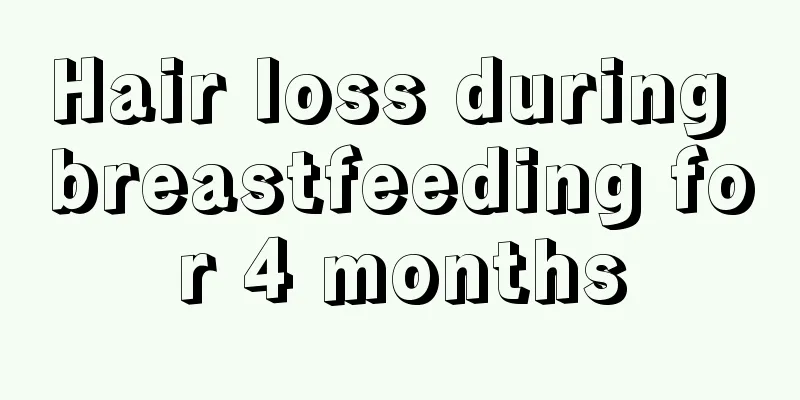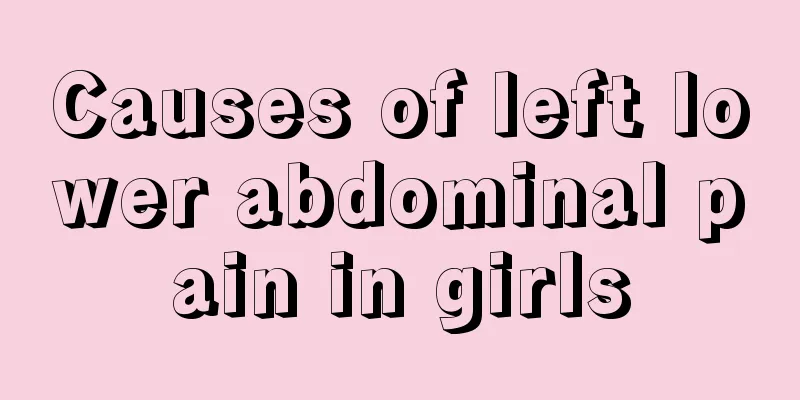Hair loss during breastfeeding for 4 months

|
Most people experience hair loss. As long as the hair loss is moderate, it is a normal physiological phenomenon. However, if the hair loss is excessive, it is an abnormal physiological phenomenon. For breastfeeding women, they are already depressed at this time. If they experience hair loss, their mood will become even lower. Some women start to lose their hair after four months of breastfeeding. What's going on? 1. When does hair loss start during breastfeeding? Postpartum hair loss refers to the abnormal loss of hair in women after giving birth. Postpartum hair is oilier and more prone to hair loss. Just wash it properly and don't use too irritating shampoos. After relaxing, hair loss will gradually stop and hair will grow again easily. This is one of the most important maintenance measures. Combing or massaging your hair every day can also improve your hair. Some women will experience hair loss about four months after giving birth, which is caused by the readjustment of hormones in the body. Pregnancy prolongs the dormant period of hair follicles, and after delivery, the hair loss period is accelerated. 2. What to do if you lose hair during breastfeeding 1. Eat a healthy diet and supplement nutrition in all aspects The main source of nutrition for hair is protein. It is recommended that breastfeeding mothers must have a reasonable diet, supplement more protein, eat more foods rich in methionine in their daily diet, pay attention to iron supplementation, and eat more vegetables and fruits. It is incorrect for some mothers to diet or be picky about food during breastfeeding in order to maintain their figure. 2. Keep a happy mood Because mothers shoulder the responsibility of taking care of the baby during breastfeeding, they suffer from excessive mental stress and lack of sleep, which leads to anxiety and depression, which is also one of the causes of hair loss. Therefore, breastfeeding mothers must keep a happy mood and adjust their state in time. 3. Cut your hair short Long hair generally needs to absorb more nutrients. It is difficult for us to fully supply the nutrients needed by the hair during breastfeeding. We suggest that breastfeeding mothers cut their hair a little shorter. On the one hand, it can reduce dry and yellow hair and split ends, and on the other hand, it can supply as much nutrition to the hair as possible. 4. Massage your scalp more often Massaging the scalp more often can increase blood circulation in the scalp. It is recommended that breastfeeding mothers do not pull their hair hard. When washing their hair, use your fingertips to massage the scalp for more than 2 minutes. You can also use a special massage comb to comb your hair several times a day to massage the scalp. 5. Wash your hair the right way Some mothers who love cleanliness wash their hair every day. In fact, this is not conducive to hair care. It is recommended that breastfeeding mothers reduce the number of times they wash their hair according to the situation, choose nourishing and less irritating shampoos, use them with hair care products, and try to let the hair dry naturally after washing. 6. Comb your hair from the ends Try to choose an anti-static wooden comb to comb your hair. Start by using a wooden comb with large gears to comb your hair smooth. Then use a dense-tooth comb to comb from the ends of the hair and gradually move upwards. Do not pull your hair hard. 7. Eat more hair-care foods You can eat more black sesame, walnuts and other foods that nourish hair. During breastfeeding, you must not blindly believe in some folk remedies. It is best to consult a doctor before taking them. Hair loss during breastfeeding is a common physiological phenomenon. If your hair falls out severely during breastfeeding, you don’t have to be nervous or anxious. You just need to actively follow the methods in this article to achieve a good conditioning effect and improve your hair loss situation to a certain extent. Hair loss during breastfeeding usually starts four months after delivery, so you need to pay attention to it. |
<<: Pain in the wound one year after cesarean section
>>: How long does it take to get your period after having an IUD installed?
Recommend
Increased secretions
Women also need to take comprehensive care of the...
Is HPV44 low-risk positive serious?
In fact, most reproductive tract infections are c...
What is the treatment for white skin on the vulva?
Some people will find white skin on the vulva, wh...
Can I wear a belly band after a caesarean section?
Many people want their bodies to recover quickly ...
What is vaginismus?
A harmonious sex life is very important for both ...
How to maintain the uterus and ovaries
In our lives, everyone has their own lifestyle, b...
What is a cystic dark area?
Some mothers don't understand why miscarriage...
Causes of early menstruation in the 40s
Women in their 40s are in their prime, and their ...
What to do with small follicles?
Gynecological diseases have always been a very wo...
What are the postoperative care for uterine fibroids?
Uterine fibroids are a relatively common gynecolo...
Why do women have brown discharge after sex?
"Papa" is a humorous name for sex life ...
Female discharge has a fishy smell
The genitals of a normal woman should have no odo...
Is the placenta thick?
The placenta gradually ages as the woman's pr...
Can I take enzymes when I have my period?
In fact, many female friends have thought of many...
There is a small suppuration in the cesarean section incision
Caesarean section is a surgical procedure that as...



![[Fat Bear Science] This is the only cancer with a clear cause. This measure can achieve more than 90% prevention. The sooner the better!](/upload/images/67f1ed6f91ea2.webp)





